Hurricane Katrina
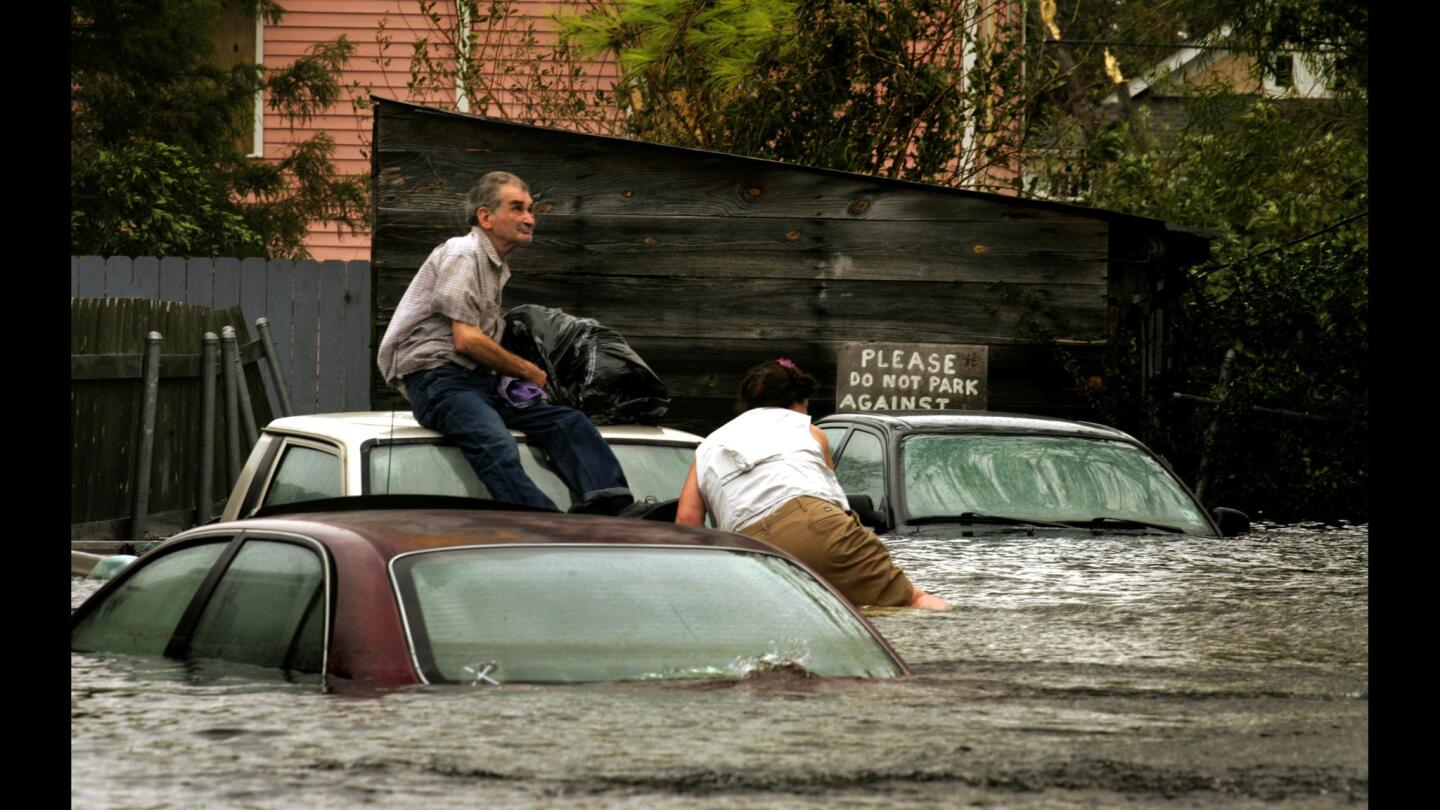
Stranded on New Orleans’ Canal Street, Robert Termier and Ruth Ann Lewis await rescue attempt by helicopter. They were later evacuated by boat.
(Carolyn Cole / Los Angeles Times)Hurricane Katrina made landfall on Aug. 29, 2005, and killed more than 1,800 people. New Orleans’ levees failed, flooding 80% of the city.
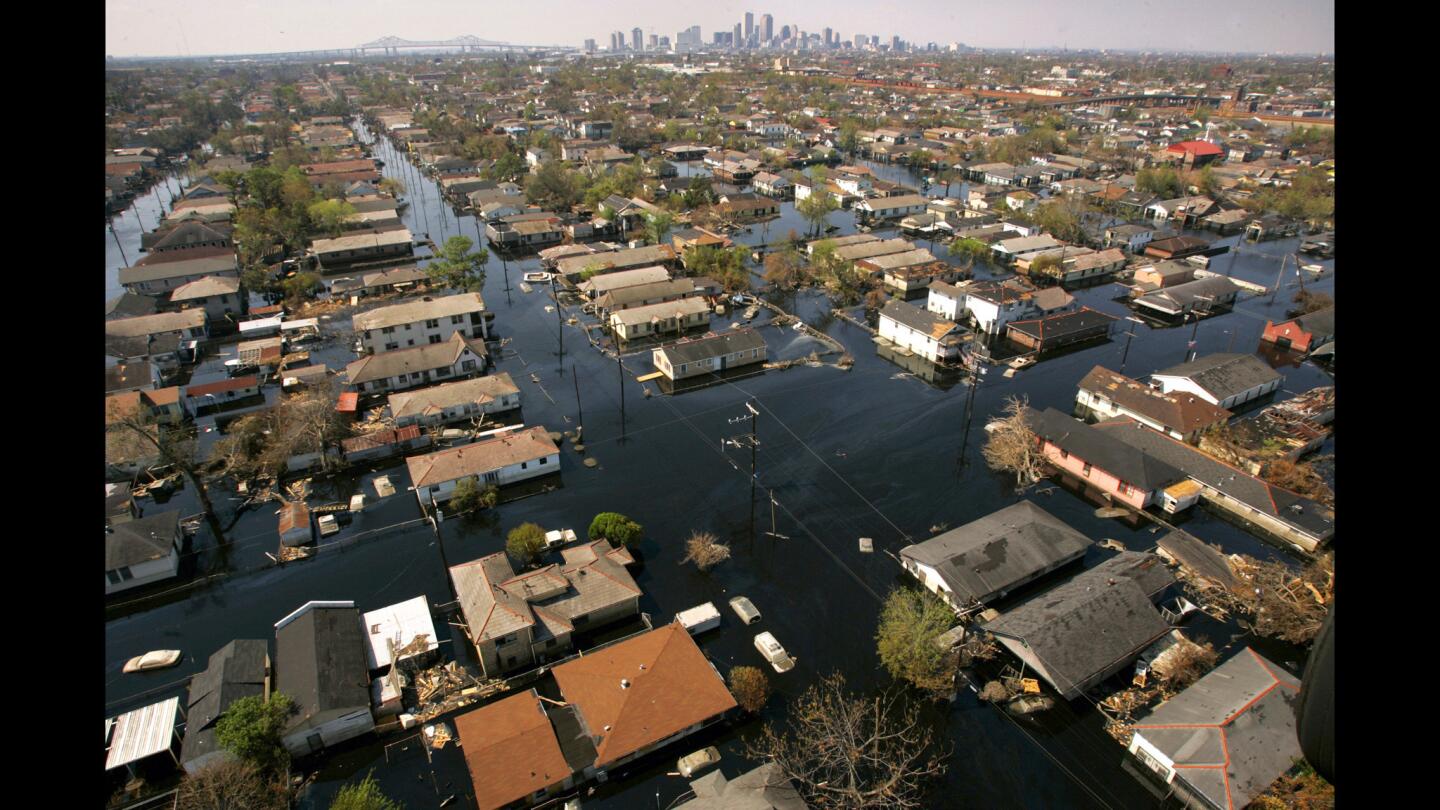
Parts of New Orleans remain under high floodwaters, particularly areas nearest to Lake Pontchartrain.
(Carolyn Cole / Los Angeles Times)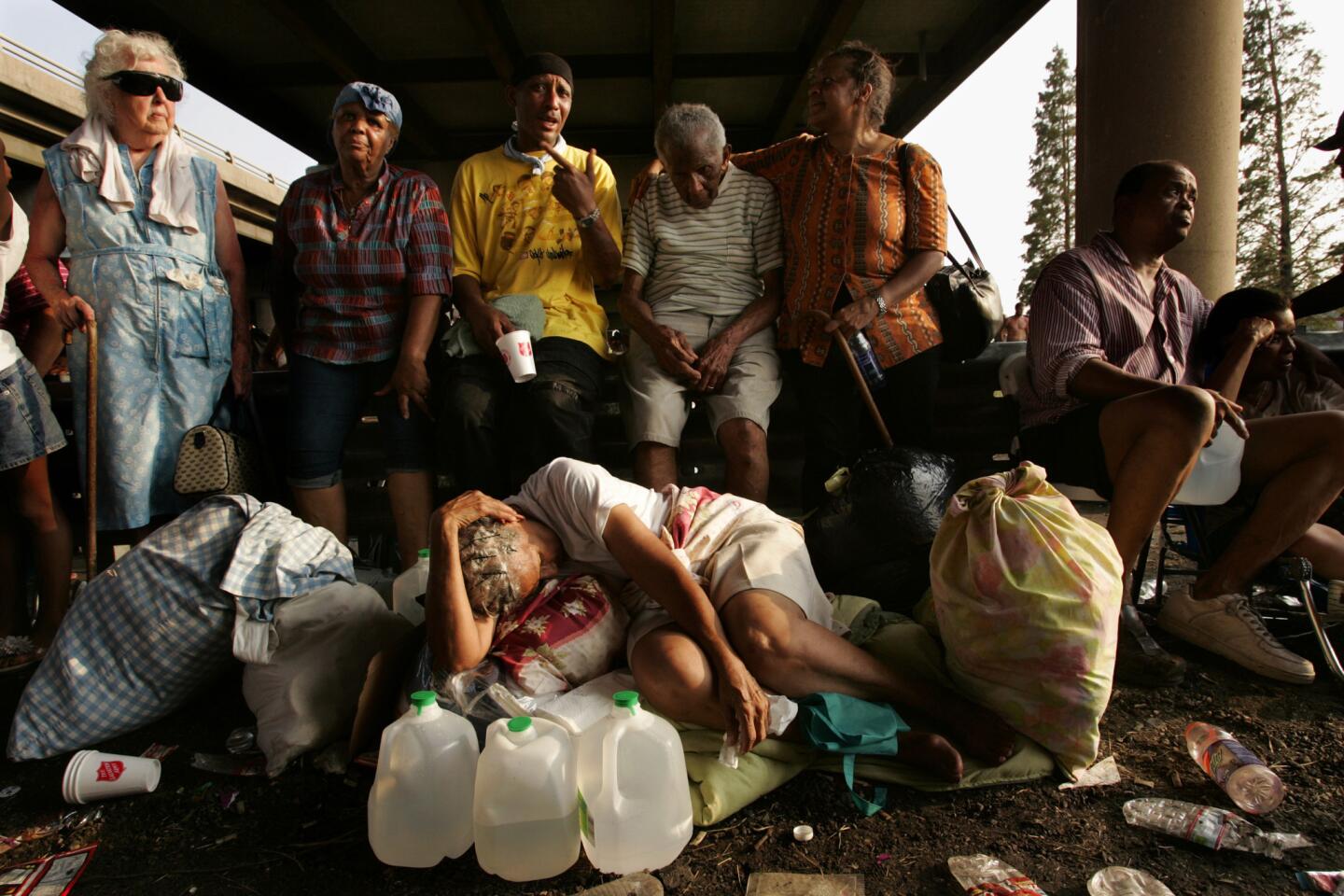
Residents of New Orleans wait to leave the city on buses bound for the Houston Astrodome. Many, like the woman lying down, were suffering from dehydration. (Carolyn Cole / Los Angeles Times)
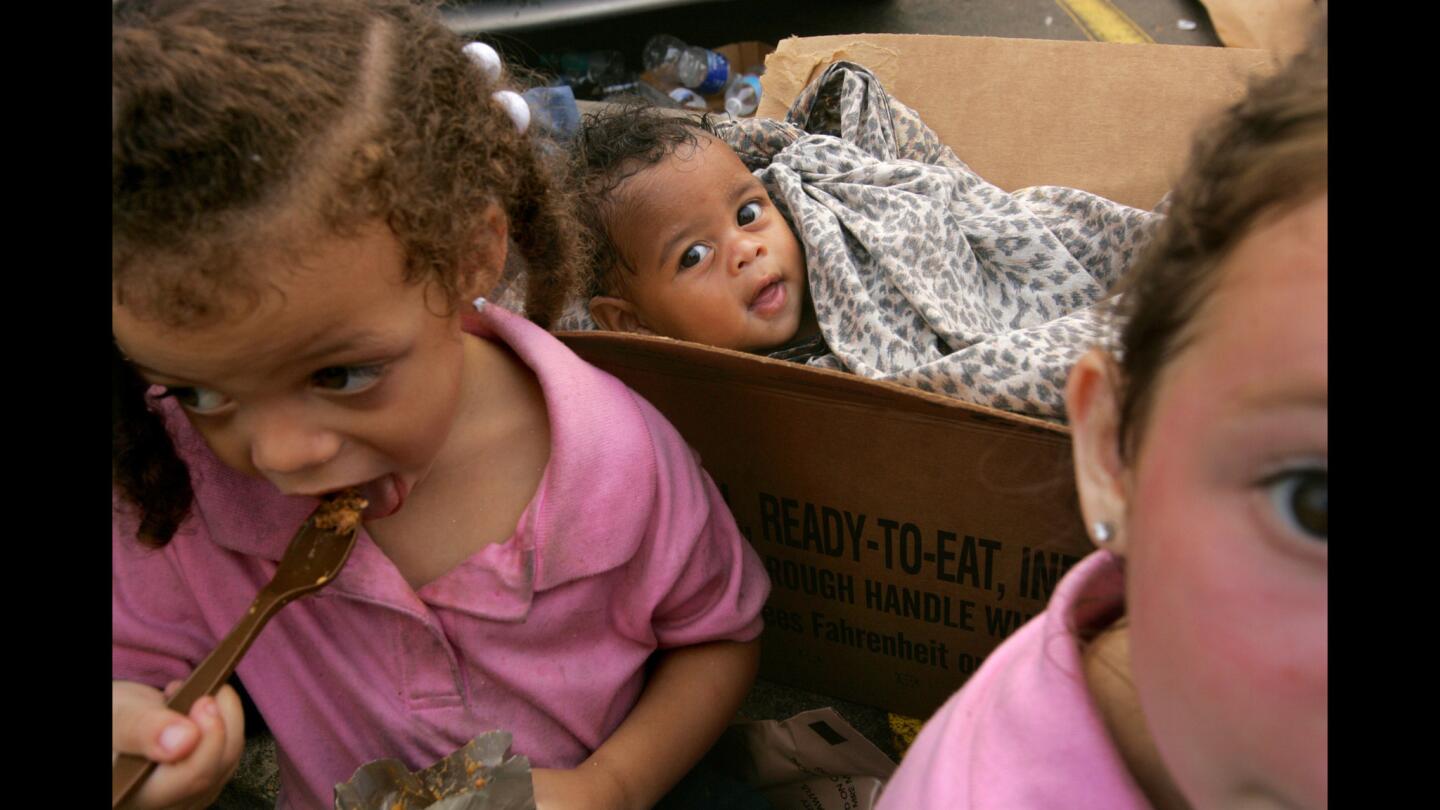
Four-month-old Alison Haynes rests in the box the family’s military food rations came in, as sisters Lexus, left, and Ariel have a meal. The family is among those who took refuge at the Superdome. (Carolyn Cole / Los Angeles Times)
Advertisement
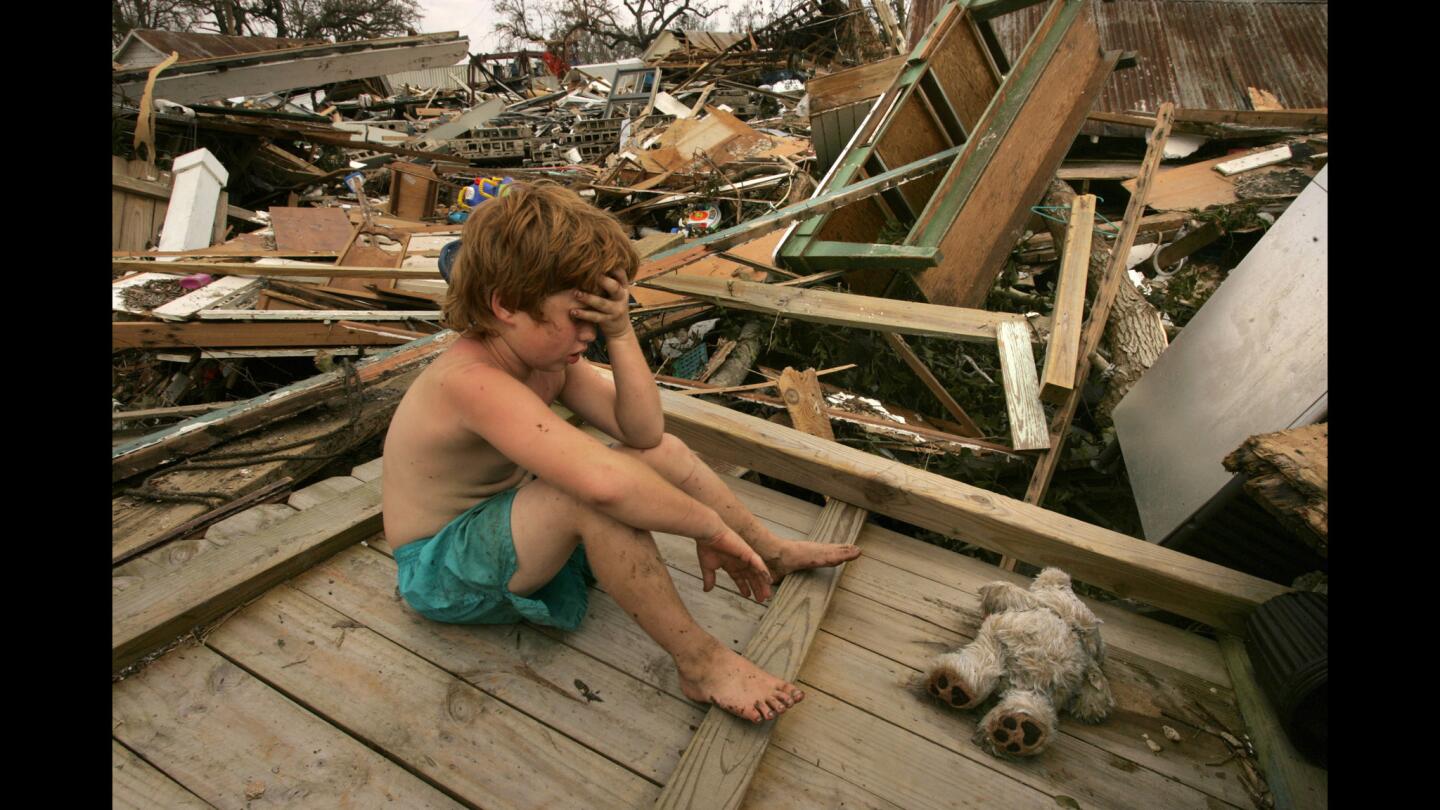
Dillion Chancey, 7, rode out Hurricane Katrina in Biloxi with his mother and father. The family lost virtually everything it owned to the storm (Carolyn Cole / Los Angeles Times)
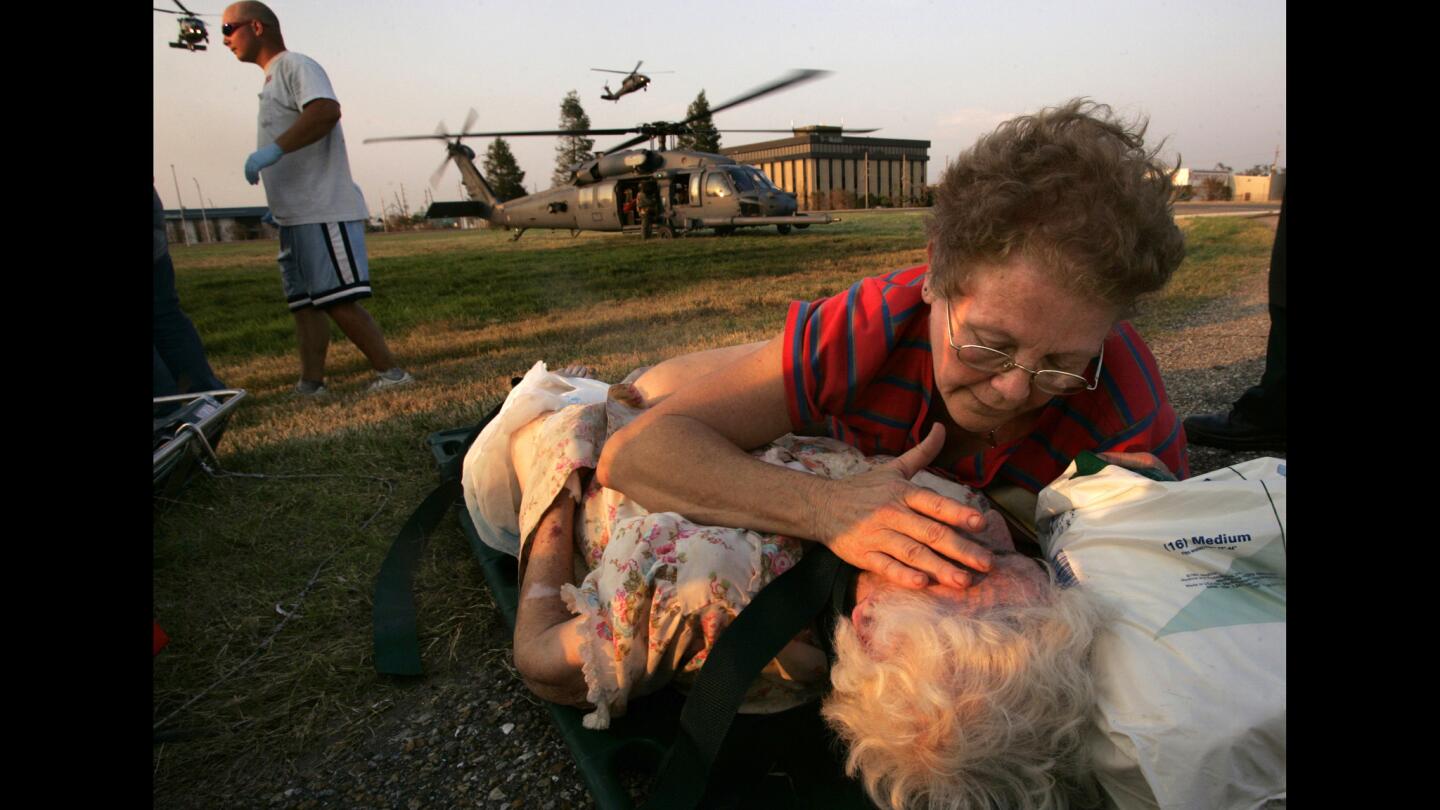
Kathy Haywood shields her 86-year-old mother, Rose McGrath, from the dust kicked up by helicopters making rescue missions in New Orleans. The mother and daughter were evacuated from a refugee shelter in the hurricane-devastated city
(Carolyn Cole / Los Angeles Times)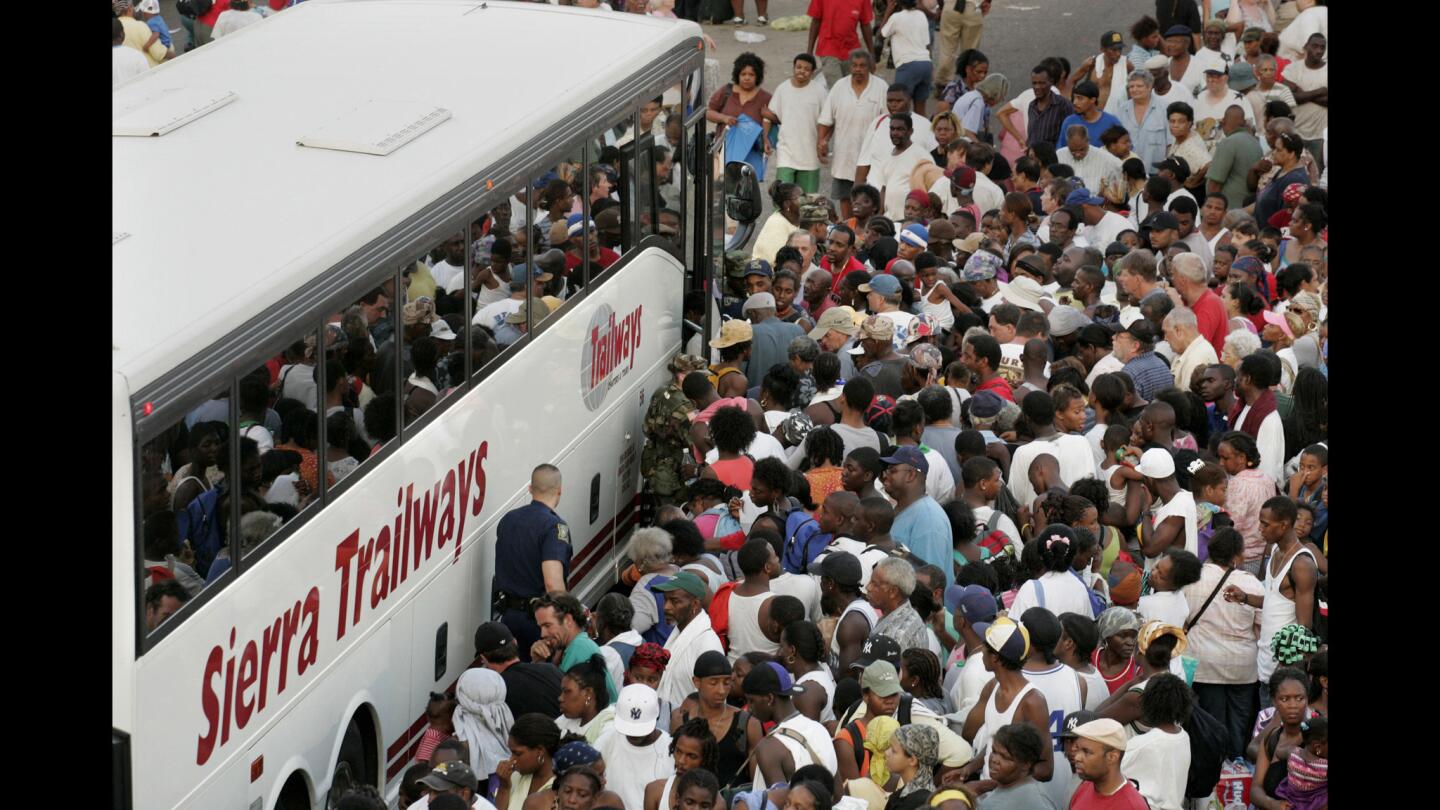
Hundreds gather in hopes of a ride out of New Orleans. New emergencies continued to threaten thousands of refugees, and efforts were underway to evacuate the city.
(Carolyn Cole/ Los Angeles Times )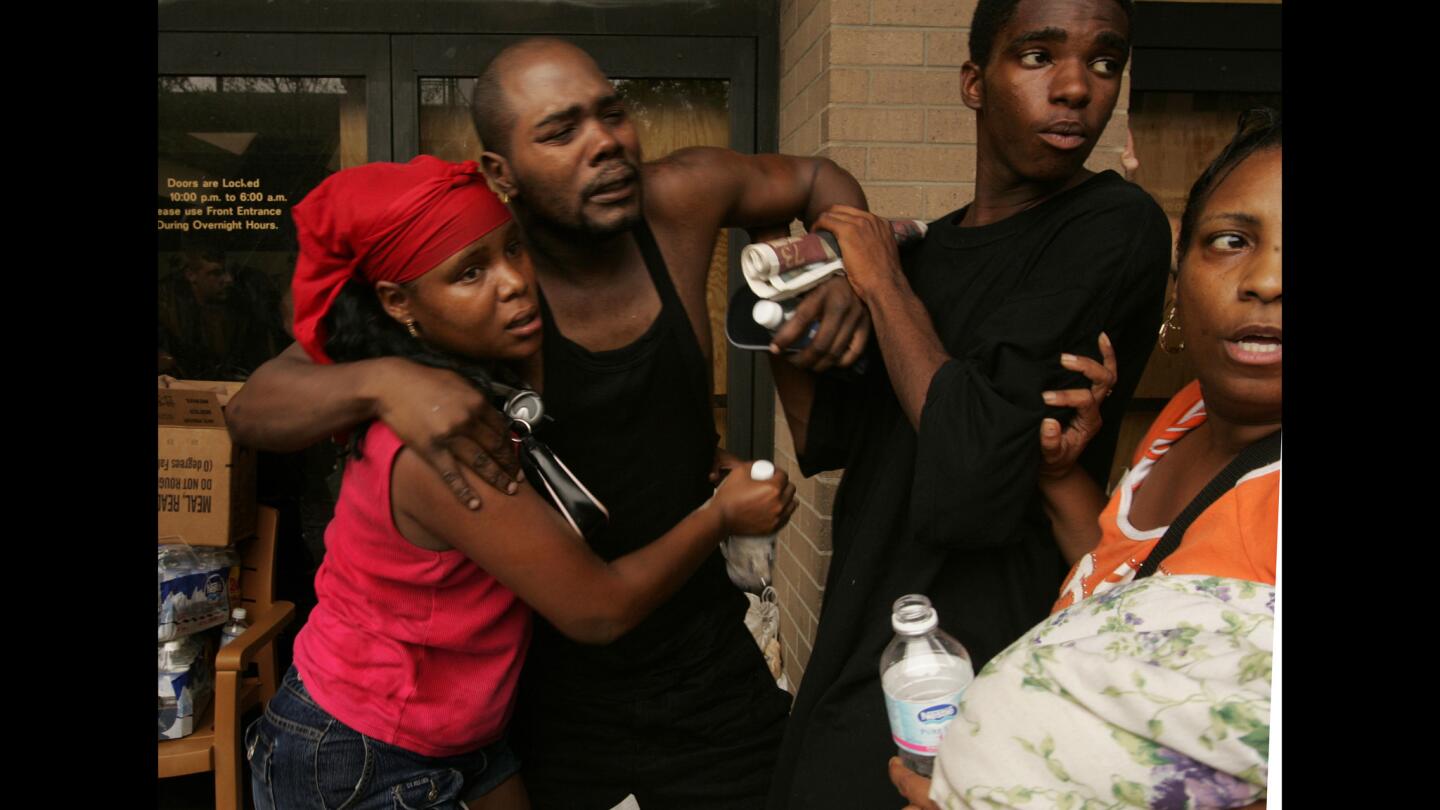
A man is helped by his family onto the evacuation bus. Many of the people staying at the Superdome were suffering from dehydration and other ailments.
(Carolyn Cole / Los Angeles Times)Advertisement
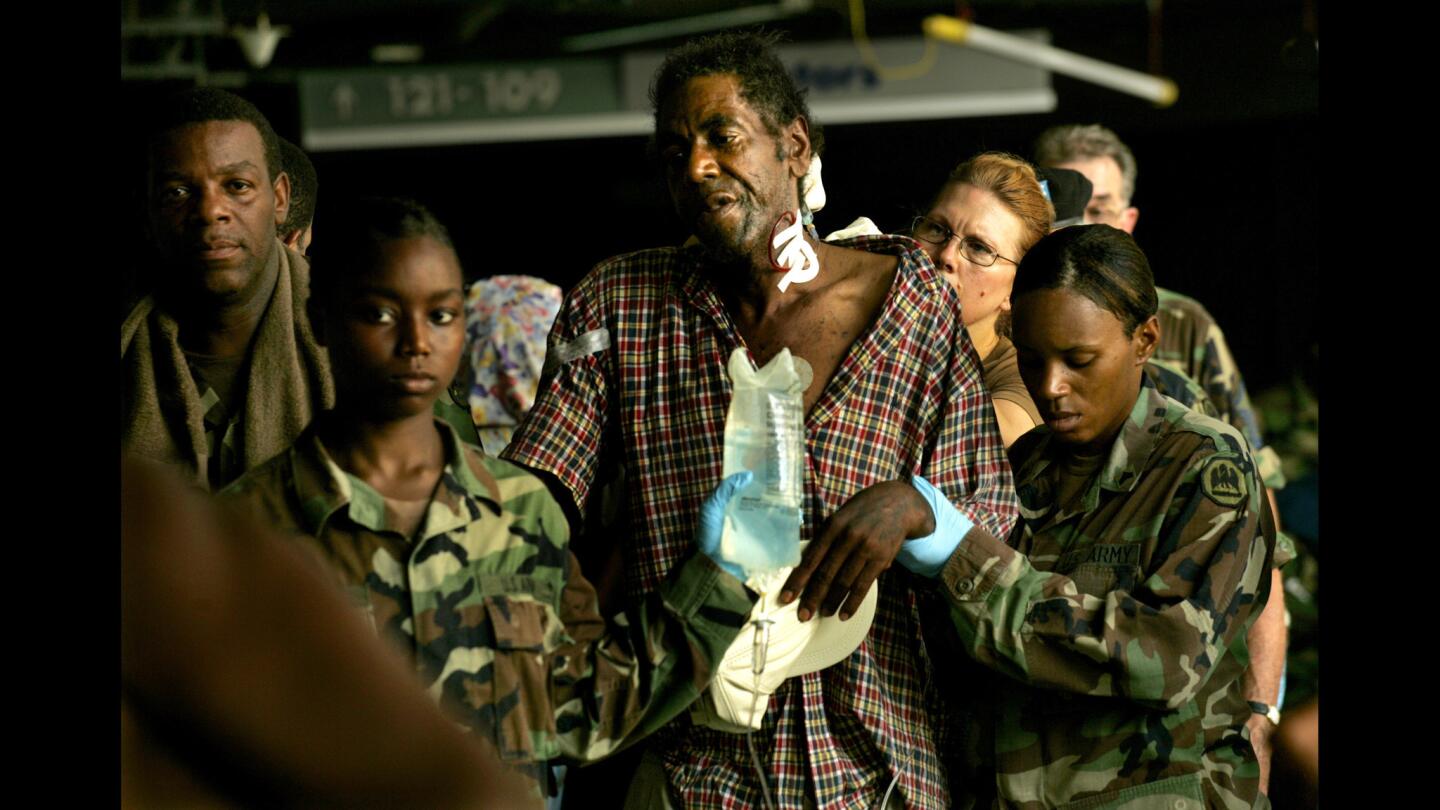
A critically ill man is helped at the triage area of the Superdome, where many ill and elderly people are being treated. Observers say the hurricane has exposed the racial fault line between blacks and whites in America. (Carolyn Cole / Los Angeles Times)
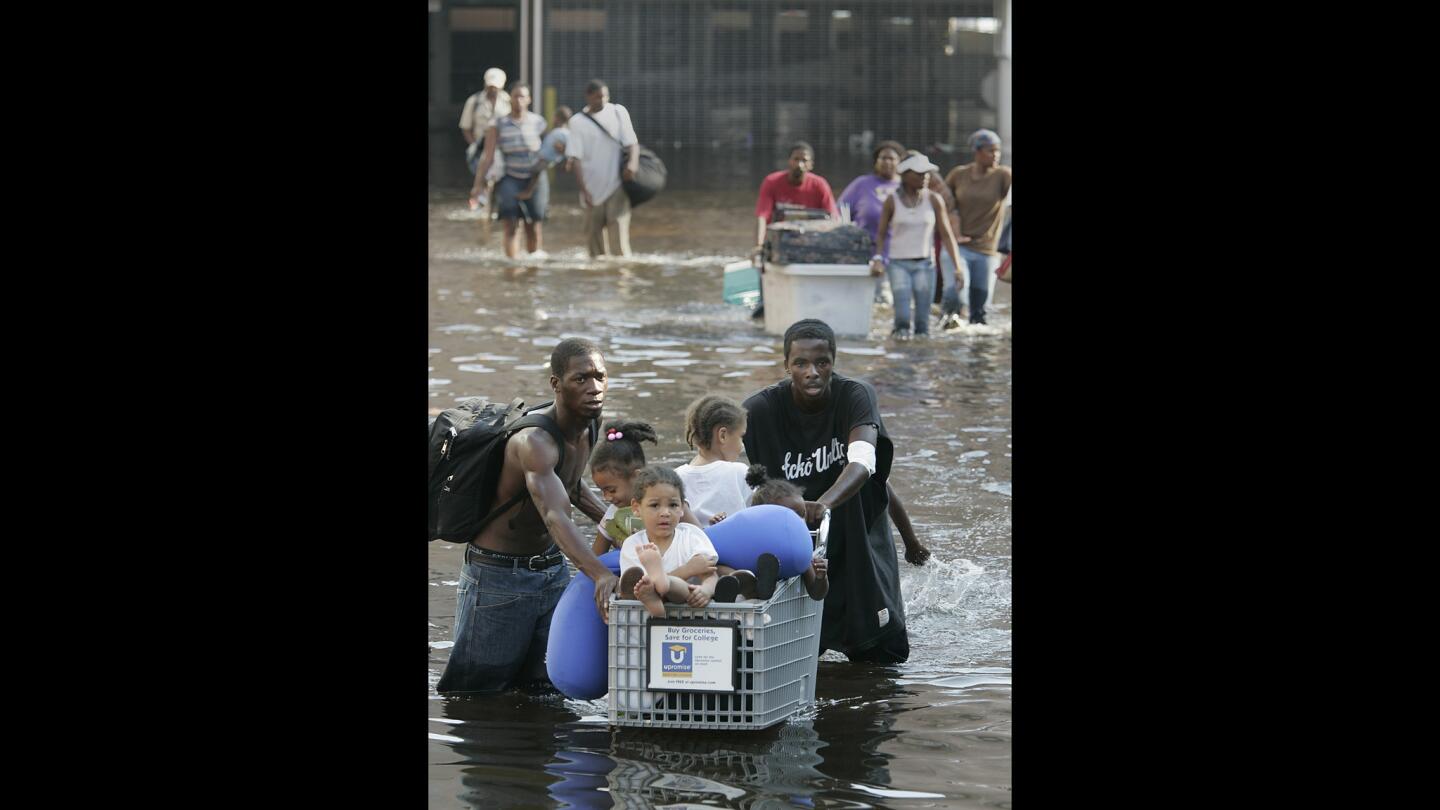
A shopping cart helps children stay above the filthy water as residents make their way to the Superdome for evacuation (Robert Gauthier / Los Angeles Times)
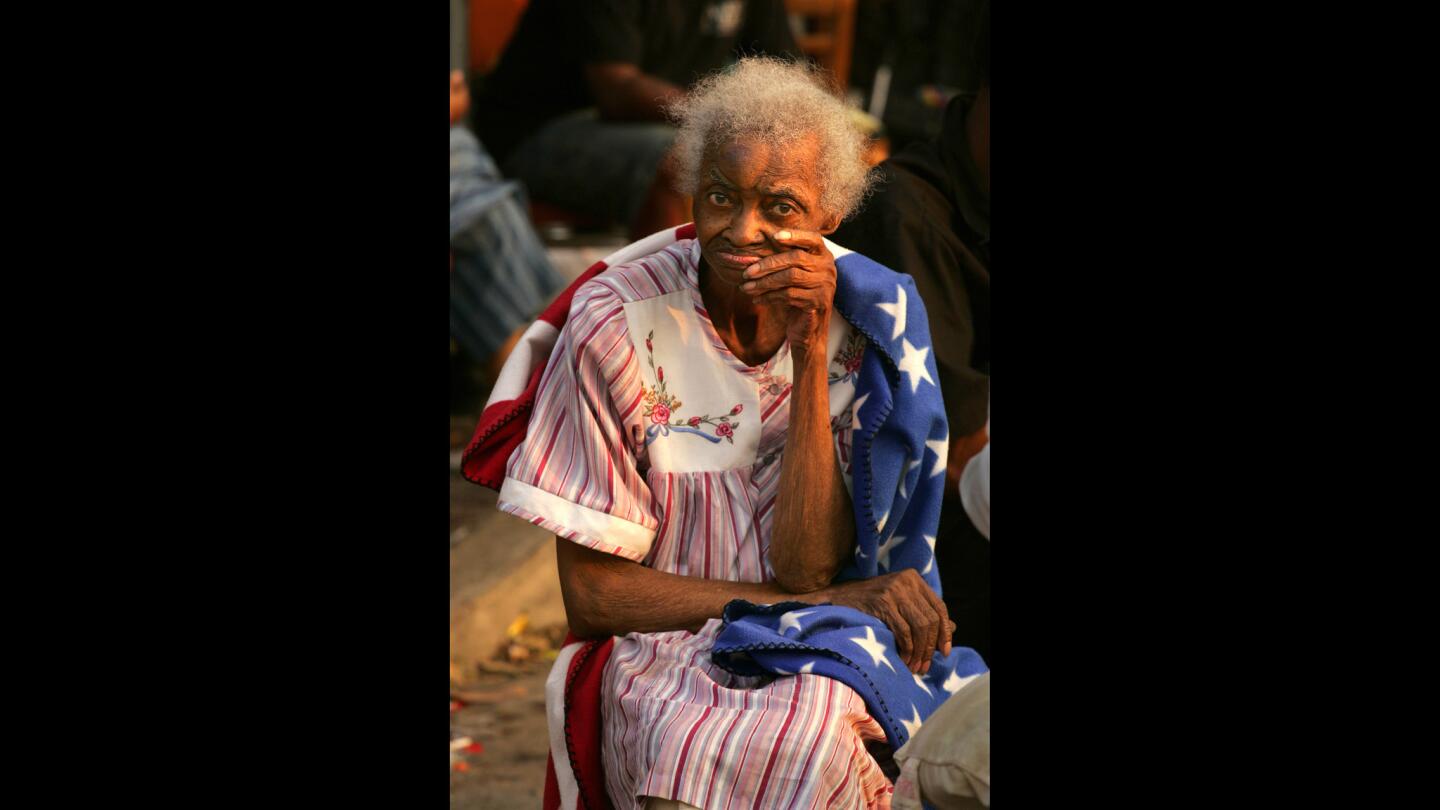
Milvirtha Hendricks, 85, can do nothing but wait for help at New Orleans’ convention center. She was later evacuated, almost a week after the storm hit. (Carolyn Cole / Los Angeles Times)
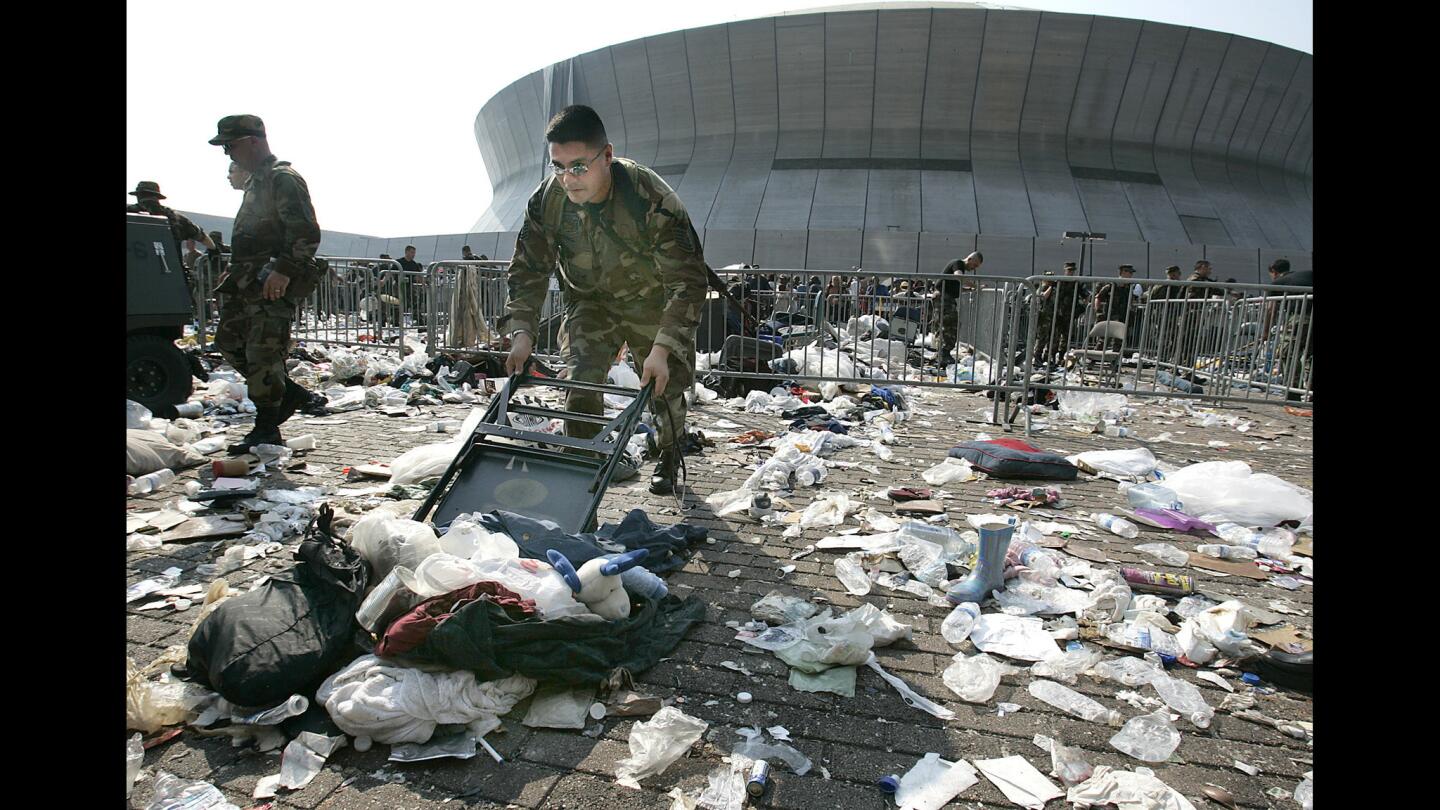
Sgt. Alex Martinez of the Texas Air National Guard uses a chair to shovel away debris at the Superdome as storm victims queue up to leave after days of misery (Robert Gauthier / Los Angeles Times)
Advertisement
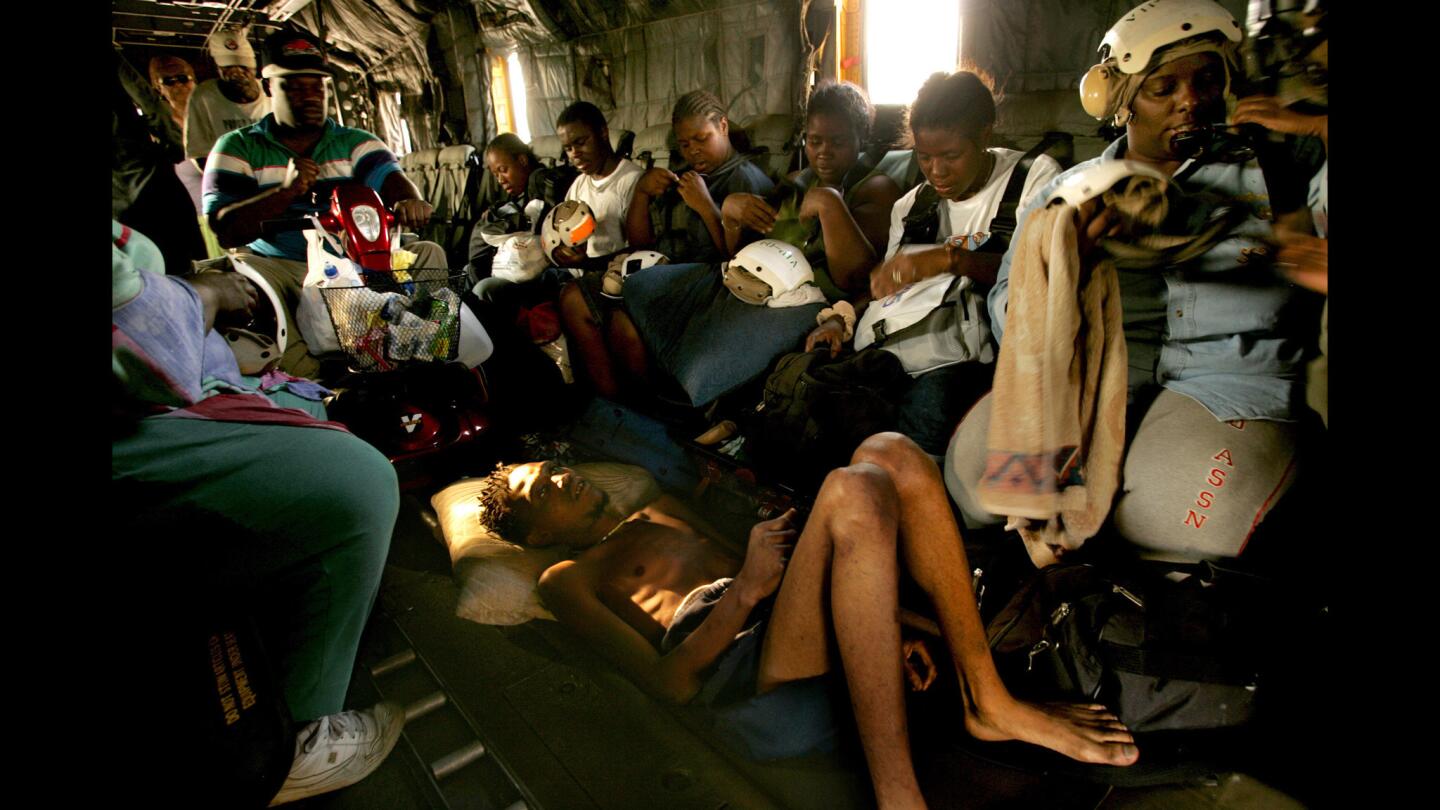
Ceasar Martin, 20, lies in a helicopter with other evacuees as they prepare to take off from New Orleans Convention Center. The sick and elderly and their families were being evacuated first (Carolyn Cole / Los Angeles Times)
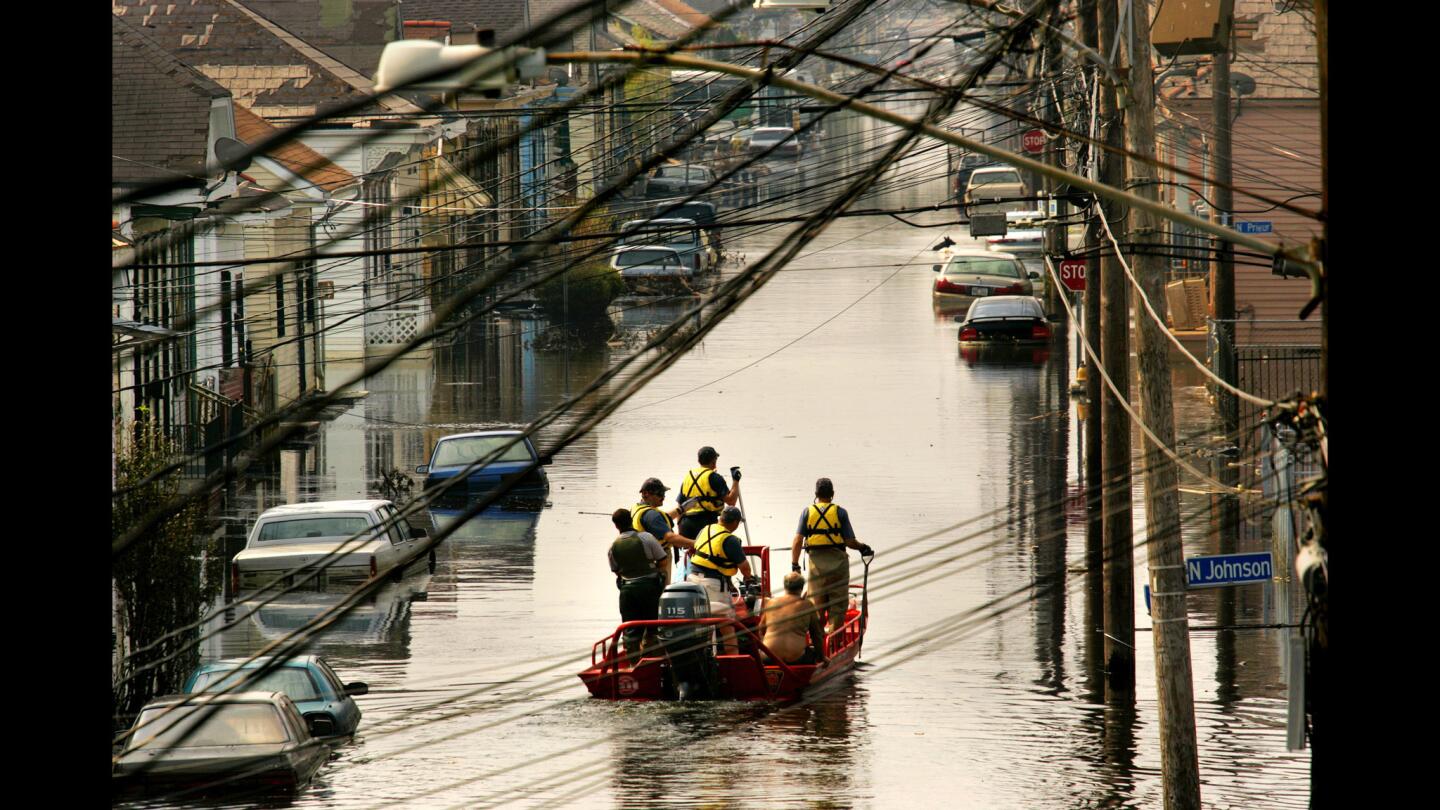
A boat with a rescue team looking for survivors moves along a street near Elysian Fields Avenue in New Orleans. (Carolyn Cole / Los Angeles Times)
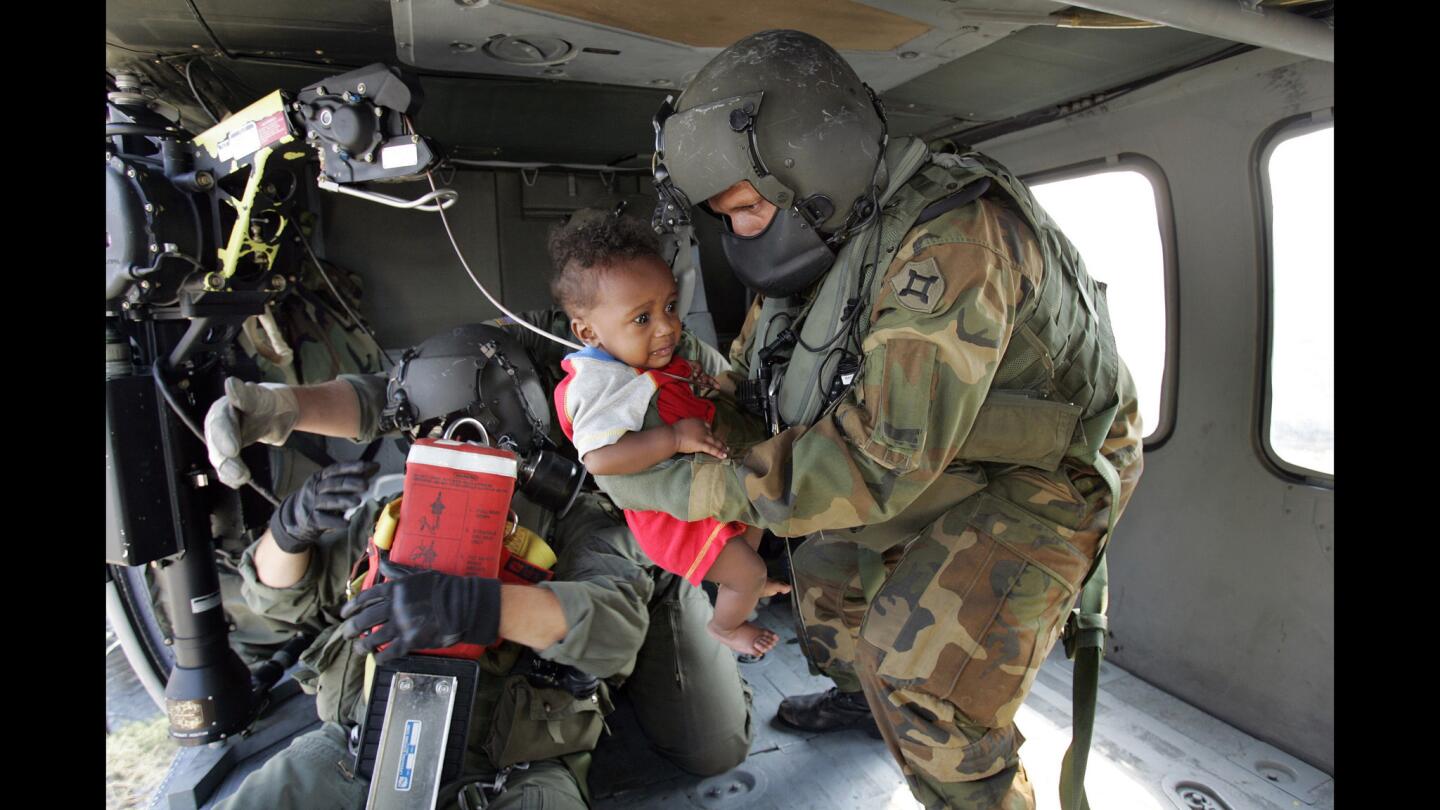
Florida National Guard members rescued Henery Johnson, 5 months, off an apartment rooftop in New Orleans on Friday. Louisiana officials are begging Washington to help shore up natural buffers so that the city can withstand future storms. (Gina Ferazzi / Los Angeles Times)
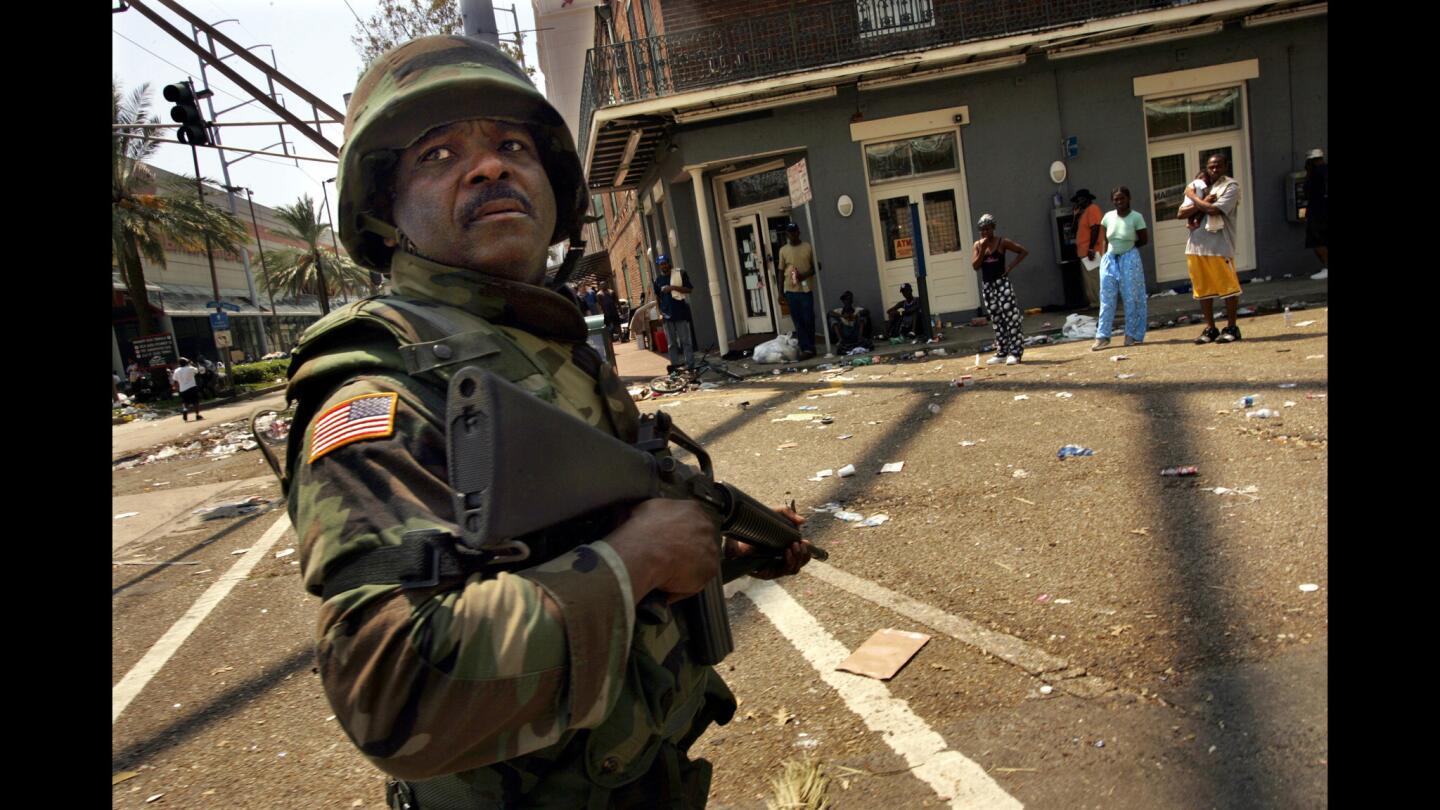
An Army National Guardsman stationed at the New Orleans Convention Center. Troops did not encounter mob violence there that they’d expected.
(Carolyn Cole / Los Angeles Times)Advertisement
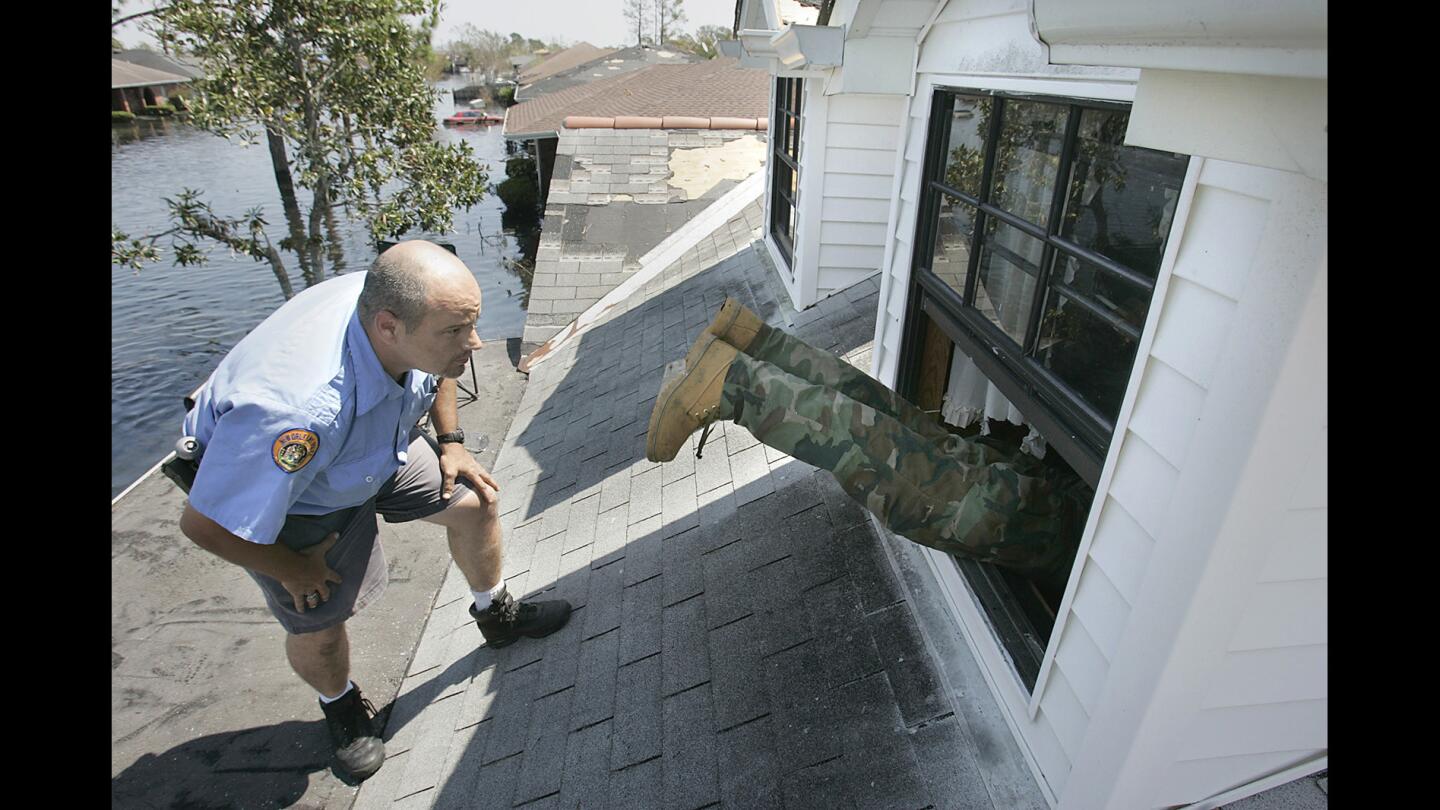
New Orleans Police Officers Mike Duzmar, left, and Patrick Hartman, whose home is unlivable, search for survivors. The two were part of a Marine-led team sweeping the area. (Robert Gauthier / Los Angeles Times)
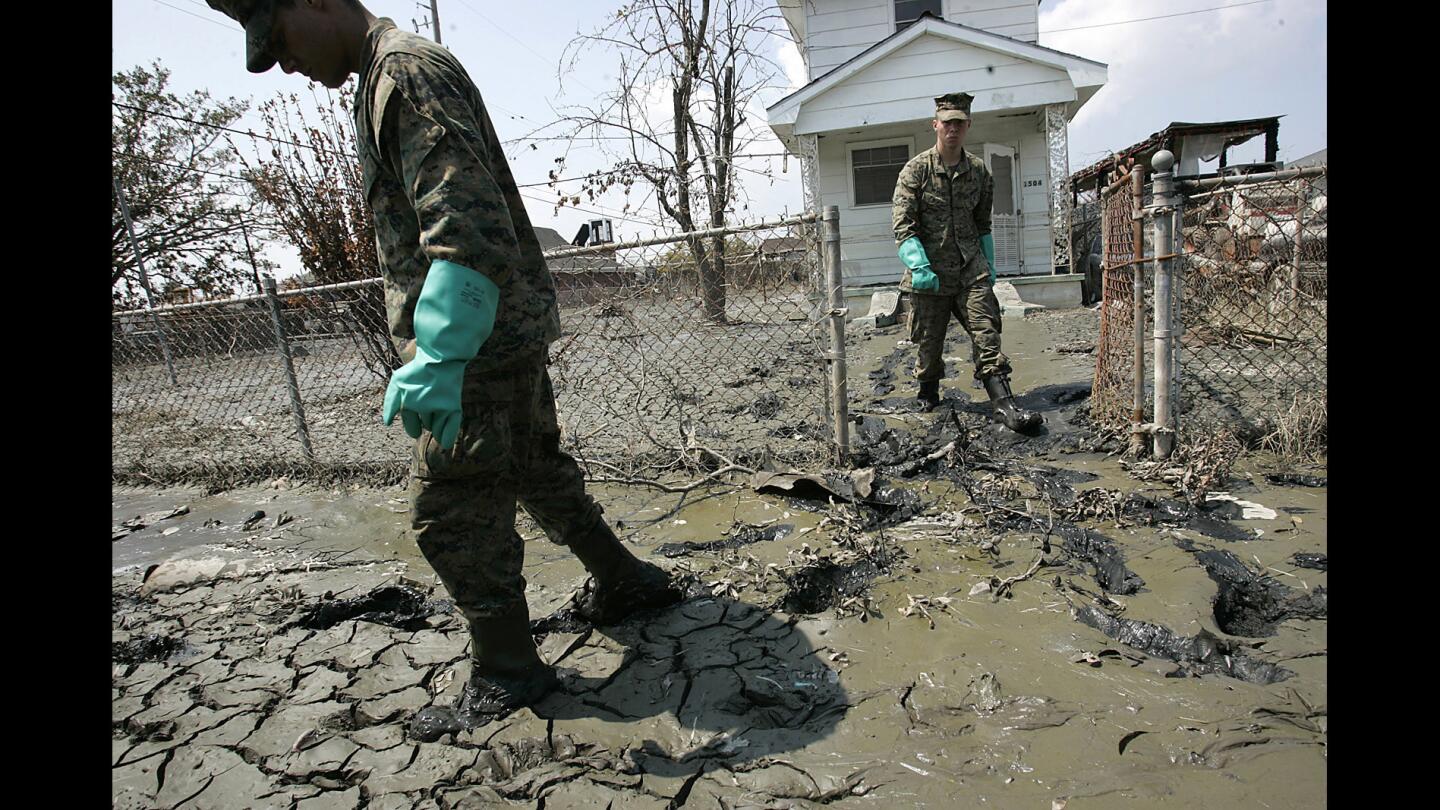
U.S. Marines trudge through mud as they go door to door in search of survivors and bodies in New Orleans’ 9th Ward. Louisiana officials said the city was now 50% flooded, with water levels receding rapidly. Nearly two-thirds of southeastern Louisiana’s water treatment plants were up and running. (Robert Gauthier / Los Angeles Times)
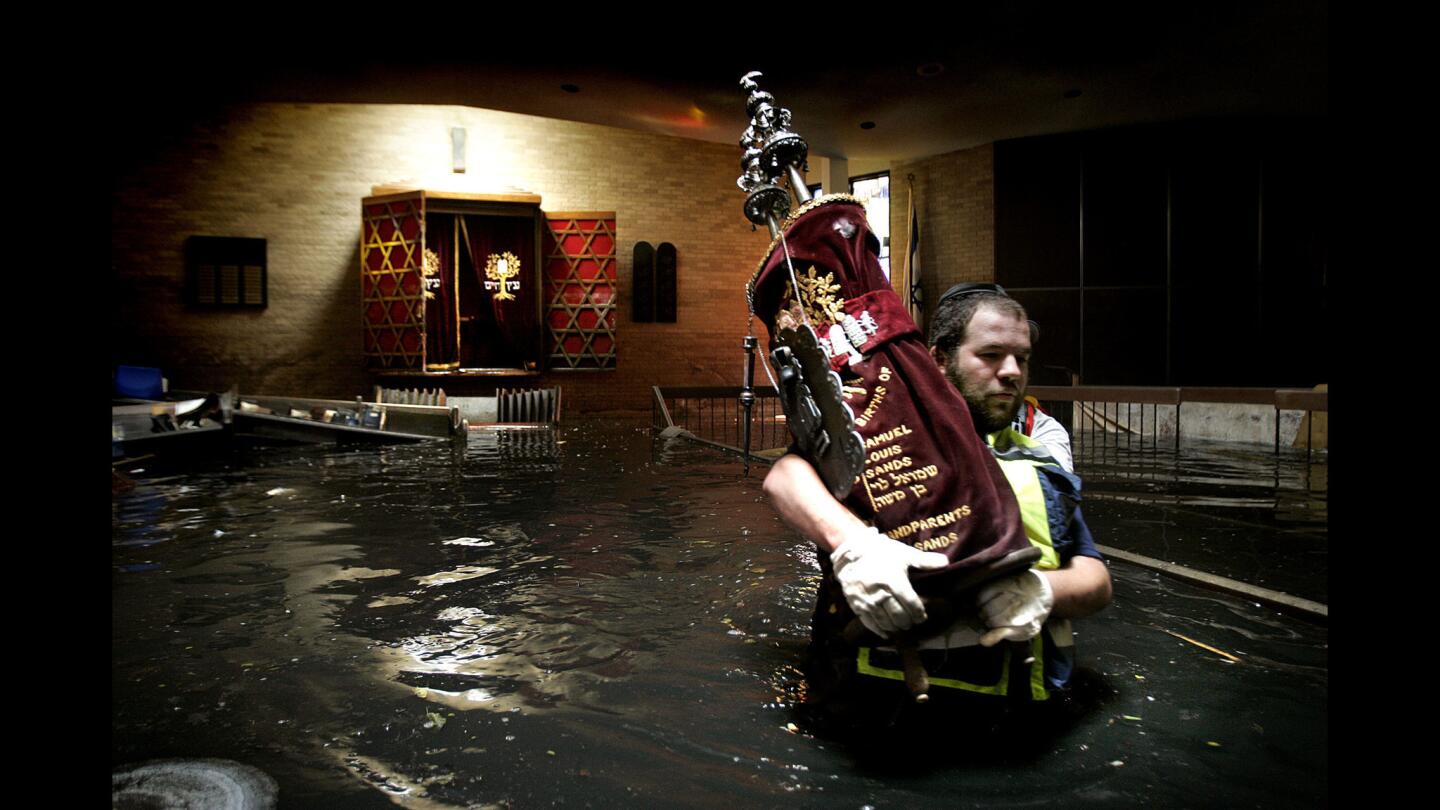
Rabbi Isaac Leider wades through floodwaters to remove a Torah scroll from Congregation Beth Israel in New Orleans.
(Rick Loomis / Los Angeles Times)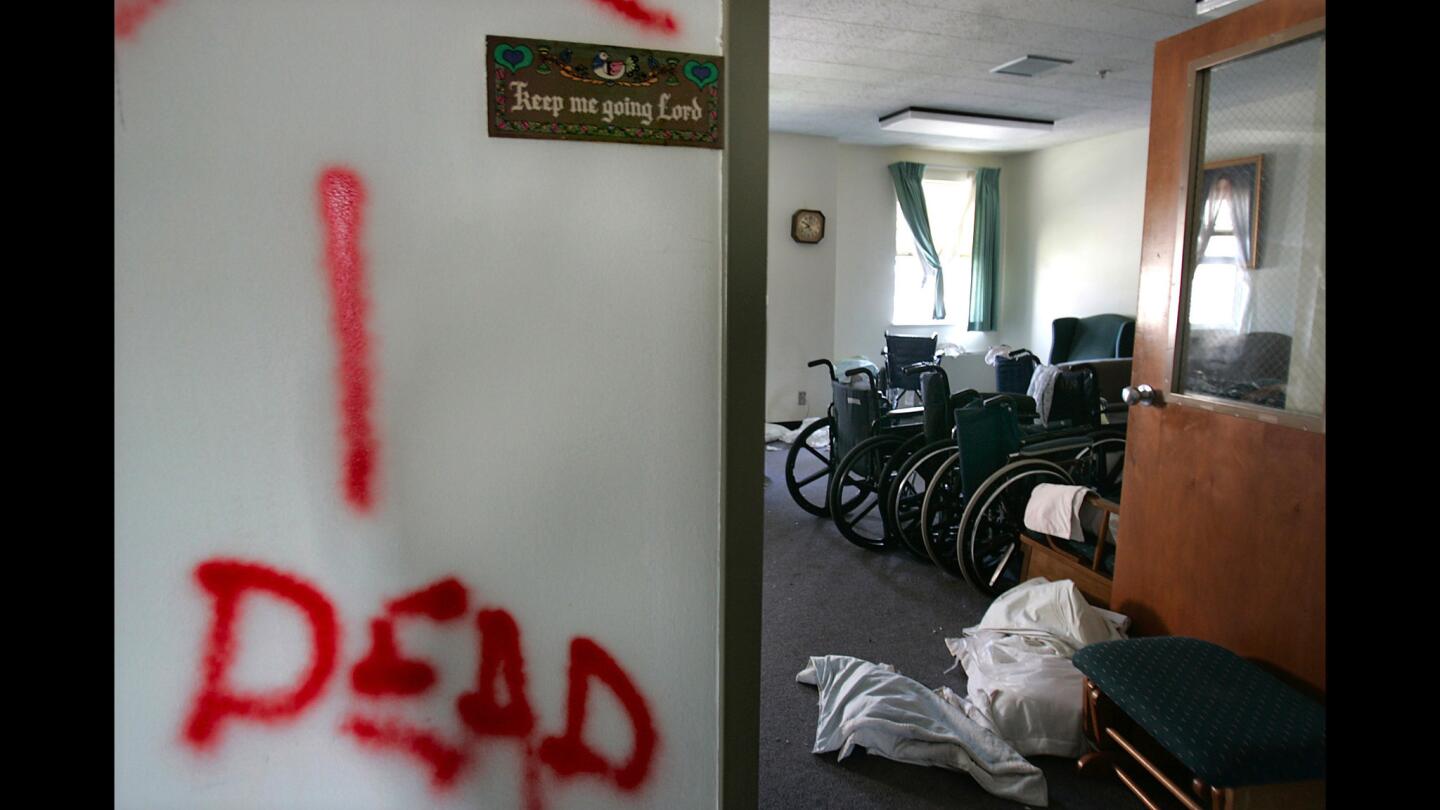
The Lafon Nursing Home of the Holy Family in New Orleans was the scene of 19 deaths. Many of the city’s dead “were the poorer and older people,” Coroner Frank Minyard said. (Robert Gauthier / Los Angeles Times)
Advertisement
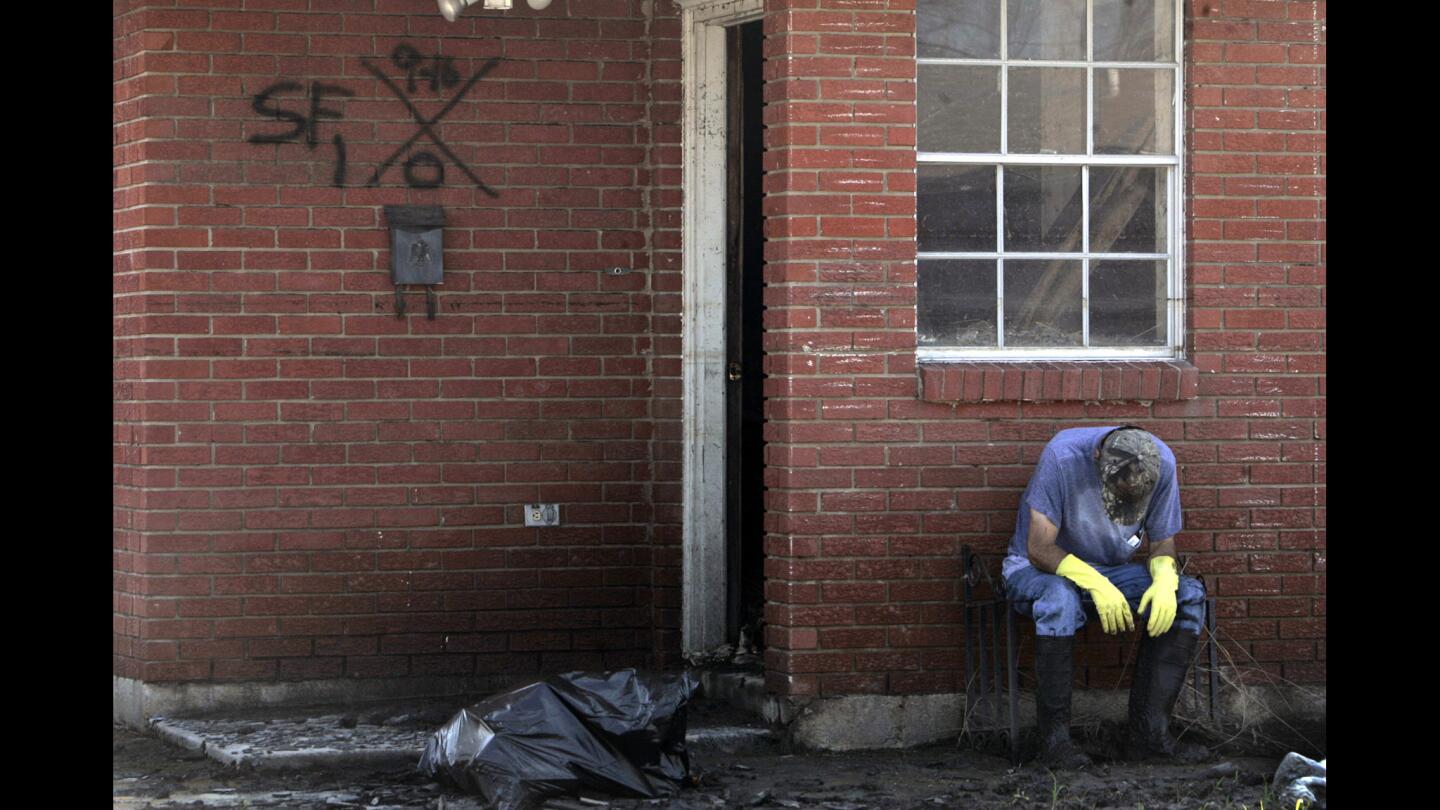
Lawrence “Butch” Heller, 49, rests after searching a relative’s house in Chalmette, La., for belongings. The markings above the mailbox were made by searchers. Residents were allowed back into St. Bernard Parish, which saw major flooding from Hurricane Katrina. Some are determined to stay, while others will relocate (Genaro Molina / Los Angeles Times)
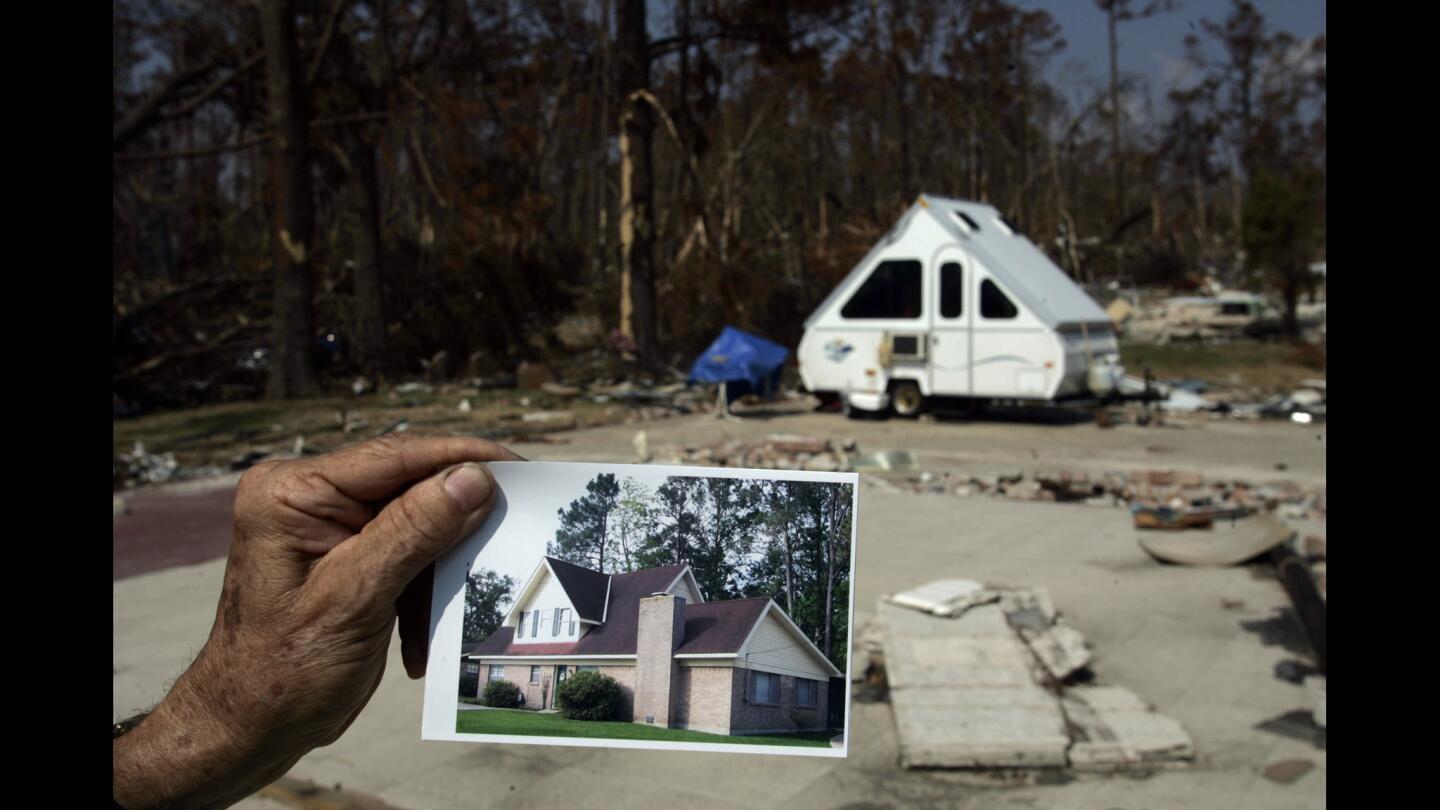
All that John MacFarlane has left of his Waveland, Miss., house is a photo. He now lives in the pop-up trailer. The federal government will be spending billions to rebuild the Gulf Coast (Genaro Molina / Los Angeles Times)
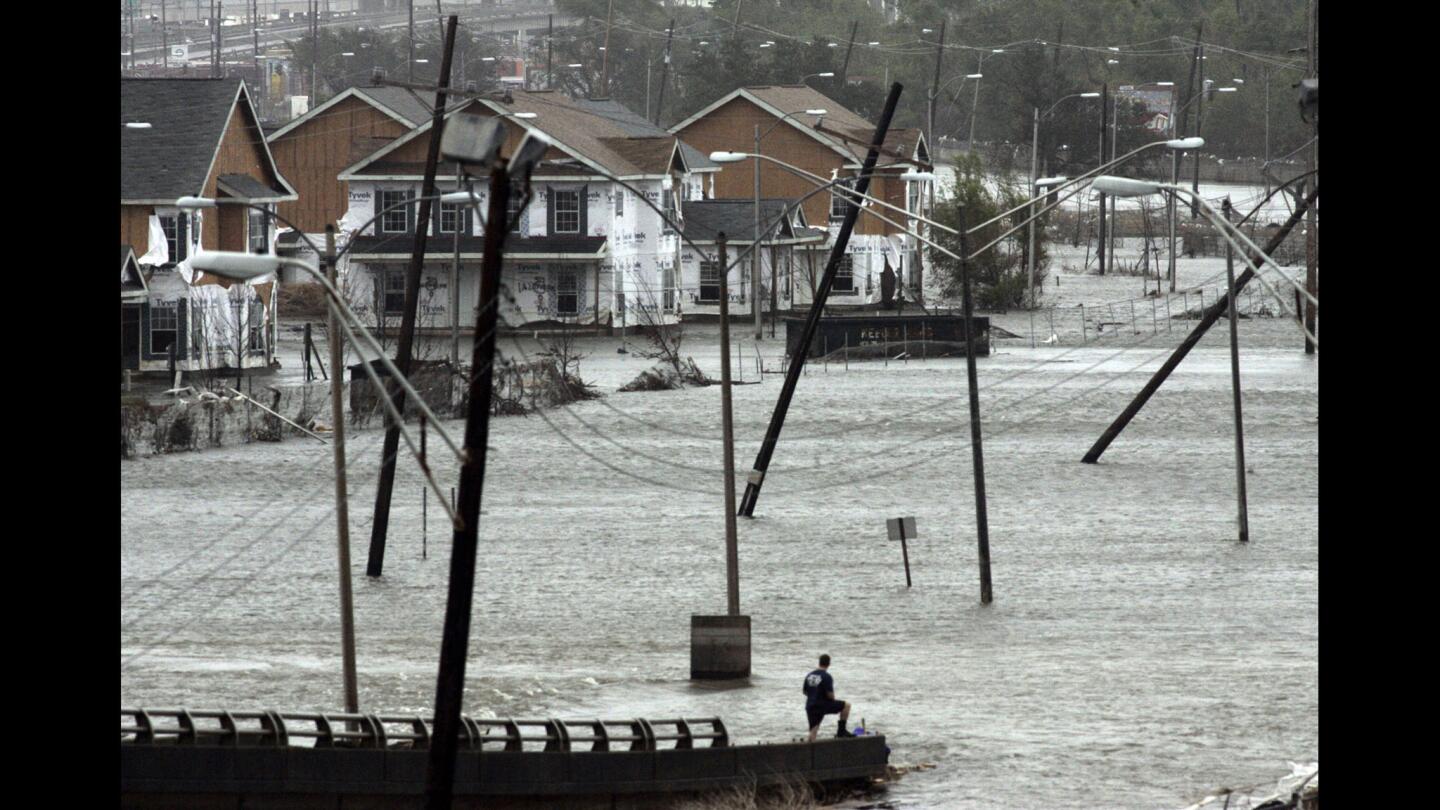
A New York firefighter watches water flow over a levee and into the Gentilly neighborhood. Rains from Hurricane Rita have inundated canals and reflooded parts of the city that were devastated by Hurricane Katrina (Genaro Molina / Los Angeles Times)
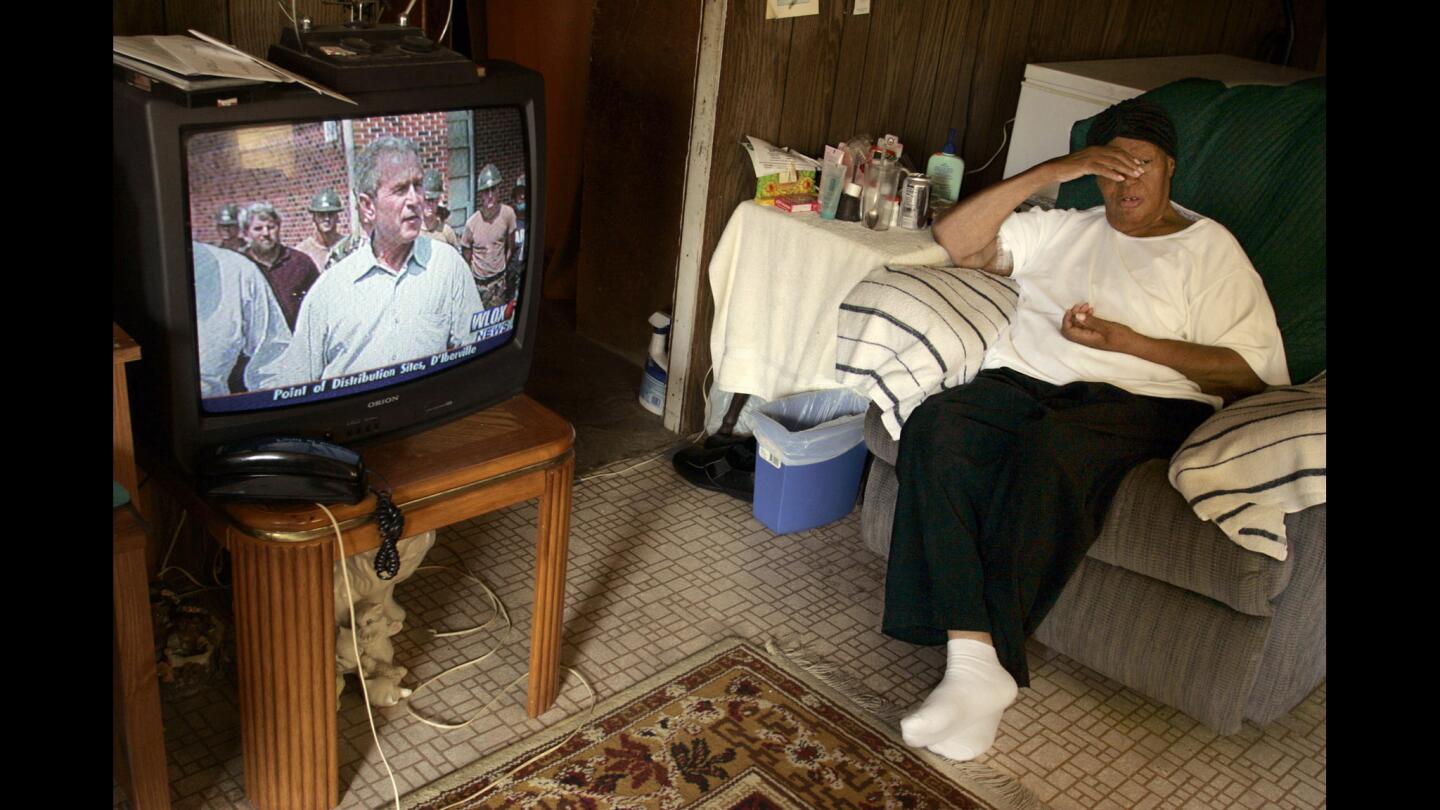
Lela Wells of Vancleave, a town in rural Mississippi, watches President Bush on television. (Genaro Molina / Los Angeles Times)
Advertisement
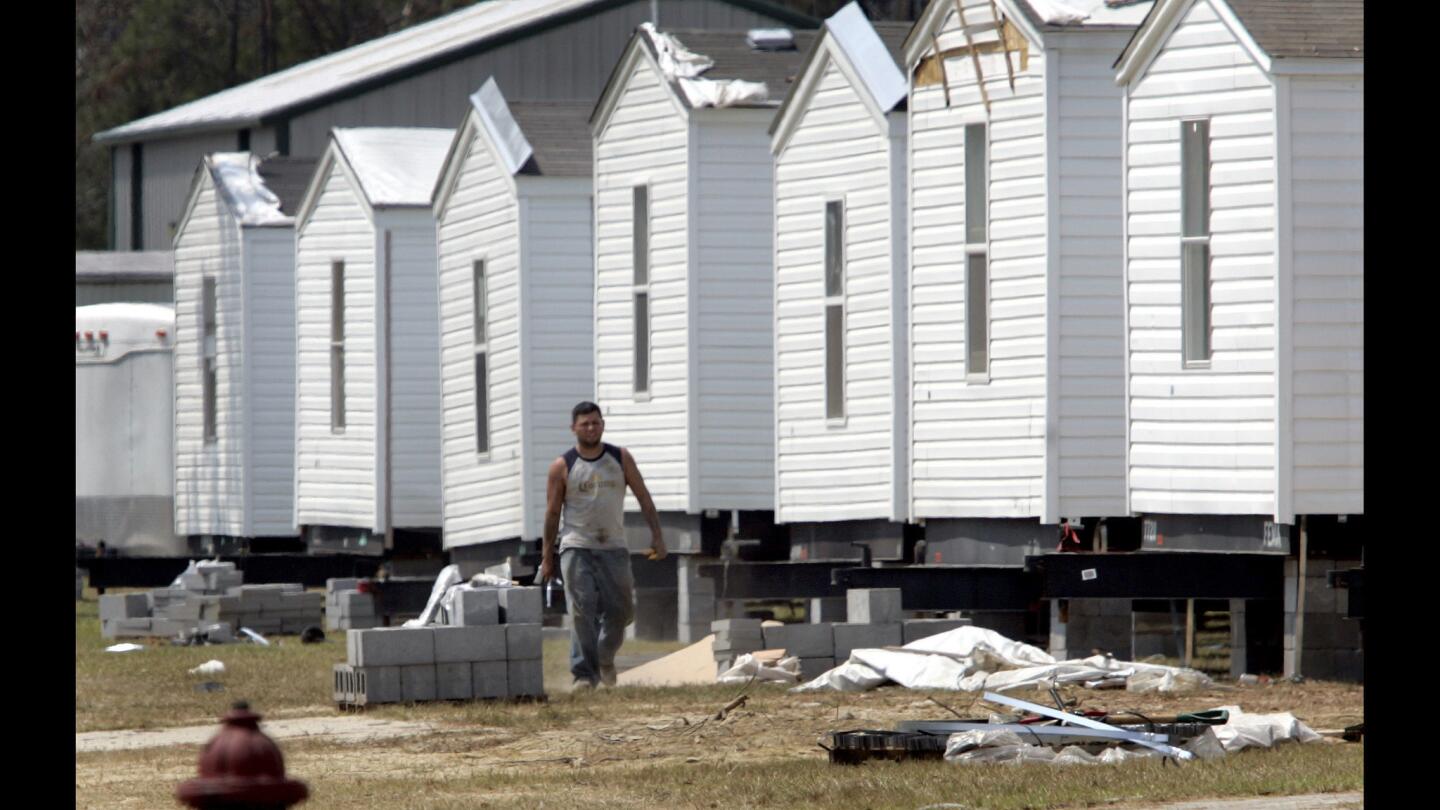
FEMA has installed dozens of prefabricated houses at a mobile home park in Pearl River, La., about 30 miles northeast of New Orleans. Similar sites will sprout across Mississippi, Alabama and Louisiana, and Congress estimates that about 450,000 families will need long-term housing (Gina Ferazzi / Los Angeles Times)







